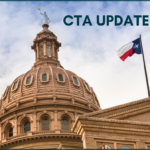On May 1, 2020, Indiana Governor Eric Holcomb signed Indiana Executive Order 20-26, which unveiled his “Back on Track” five-stage plan to incrementally reopen the state’s economy.
The order requires all Indiana businesses that are reopening or continuing operations to have a safety plan in place by next Monday, May 11, that “implement[s] measures and institute[s] safeguards to ensure a safe environment for their employees, customers, clients, and members.”
Safety plans – which must be publicly posted and provided to each employee – are required to address, at a minimum, the following four points:
- Instituting an employee health screening process;
- Employing enhanced cleaning and disinfecting protocols for the workplace, including regularly cleaning high-touch surfaces;
- Enhancing the ability of employees, customers, and clients to wash hands or take other personal hygiene measures such as the use of hand sanitizer; and
- Complying with social distancing requirements established by the CDC, including maintaining six-foot social distancing for both employees and members of the public when possible and/or employing other separation measures such as wearing face coverings or using barriers.
Furthermore, Executive Order 20-26 provides guidance to businesses on actions to take to thwart the spread of COVID-19. The following is a list of measures that Indiana employers are encouraged to adopt:
- Allow as many employees as possible to work from home by implementing policies regarding teleworking and video conferencing.
- Ensure sick leave policies are up to date, flexible, and non-punitive in order to allow sick employees to stay home to care for themselves, children or other family members.
- Consider encouraging employees to do a self-assessment each day in order to check if they have any symptoms commonly associated with COVID-19 (fever, cough or shortness of breath).
- Actively encourage sick employees to stay home until they are free of fever (without the use of medication) for at least 72 hours (three full days) and symptoms have improved for at least 72 hours and at least seven days have passed since symptoms first began.
- Suspend any policies and do not require a healthcare provider’s note to validate the illness or return to work of employees who are sick with acute respiratory illness.
- Promptly separate employees who appear to have acute respiratory illness symptoms from other employees and send them home immediately. Restrict their access to the business until they have recovered.
- Reinforce key messages to all employees regularly (including stay home when sick, use cough and sneeze etiquette, and practice hand hygiene), and place posters in areas where they are most likely to be seen.
- Provide protection supplies such as soap and water, hand sanitizer, tissues, and no-touch disposal receptacles for use by employees.
- Frequently perform enhanced environmental cleaning of commonly touched surfaces, such as workstations, countertops, railings, door handles, and doorknobs.
- Use the cleaning agents that are usually used in these areas and follow the directions on the label.
- Provide disposable wipes so commonly used surfaces can be wiped down by employees before each use.
- Be prepared to change business practices, if needed, in order to maintain critical operations (e.g., identify alternative suppliers, prioritize customers or temporarily suspend some of your operations).
Please contact your KDDK attorney or any member of the KDDK labor and employment law team for additional information and individualized guidance on this or any related topic.




